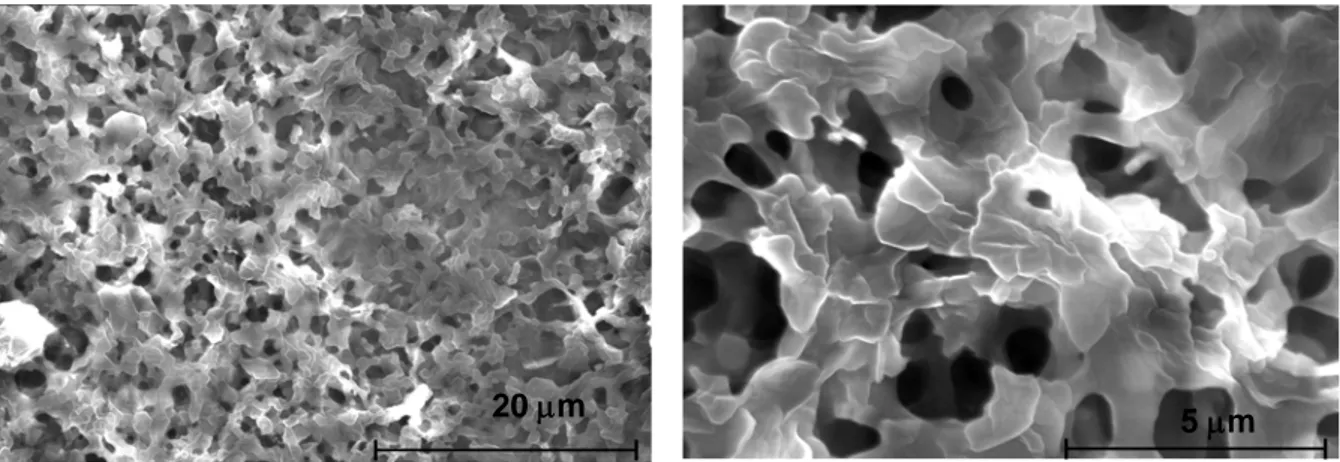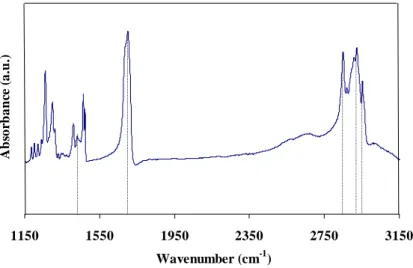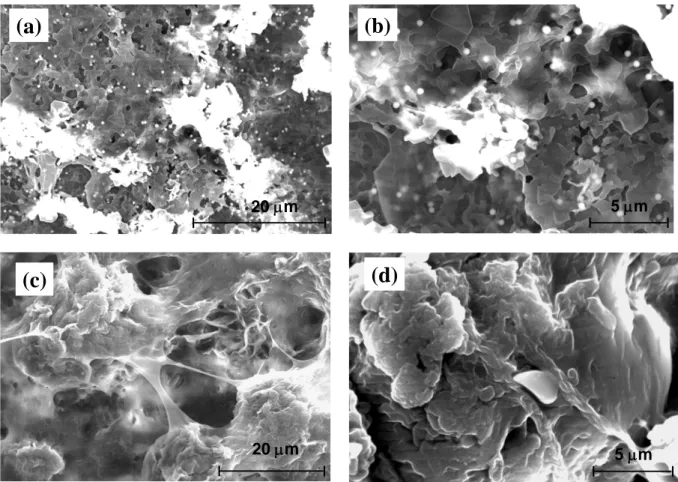A simple method to create superhydrophobic aluminium surfaces
R. Jafari a and M. Farzaneh bNSERC / Hydro-Quebec / UQAC Industrial Chair on Atmospheric Icing of Power Network Equipment (CIGELE) and Canada Research Chair on Atmospheric Icing of Power Network Equipment (INGIVRE),
www.cigele.ca
Université du Québec à Chicoutimi, Chicoutimi, QC, Canada a rjafari@uqac.ca, b masoud_farzaneh@uqac.ca
Abstract
Superhydrophobic surfaces were prepared using a very simple and low-cost method by spray coating. A high static water contact angle of about 154° was obtained by deposition of stearic acid on an aluminium alloy. However, this coating demonstrated a high contact angle hysteresis (~ 30º). On the other hand, superhydrophobic surfaces with a static contact angle of about 162º and 158º, and a low contact angle hysteresis of about 3º and 5º were respectively obtained by incorporating nanoparticles of SiO2 and CaCO3 in stearic acid. The excellent resulting hydrophobicity is
attributed to the synergistic effects of micro/nanoroughness and low surface energy. A study of the wettability of these surfaces at temperatures ranging from 20 to -10 ºC showed that the superhydrophobic surface becomes rather hydrophobic at supercool temperatures.
Keywords
Superhydrophobicity, spray coating, stearic acid, SiO2 nanoparticles, aluminium
Introduction
Superhydrophobic surfaces (water contact angle θ > 150º) with a low contact angle hysteresis have many potential industrial applications such as reduction of ice and snow adhesion, surface self-cleaning, stain resistant textiles, corrosion prevention and antibiofouling surfaces [1-2]. It is well known that the maximum contact angle that can be attained on a flat surface by lowering the surface energy does not exceed 120°. However, the addition of roughness to the surface can increase the contact angle of water without altering the surface chemistry [3]. Superhydrophobic surfaces can be achieved by a combination of low surface energy materials, and surface micro and nanostructures. The majority of these approaches start by creating the roughness on the surface, by means like chemical etching, plasma treatment, electrochemical method, template method, vapor deposition and sol-gel method and ends up with deposition of low surface energy materials on roughed surfaces [4-9]. The commonly used reactive molecules for low surface-energy modification are mainly long alkyl chain thiols, alkyl or fluorinated organic silanes, perfluorinated alkyl agents, long alkyl chain fatty acids, polydimethylsiloxane-based polymers or other polymers, or their combinations [6]. However, most of the chemicals materials used for hydrophobization are nonbiodegradable, expensive and potentially harmful to human health and the environment which limits their potential applications [10]. Therefore, developing a simple, inexpensive approach to obtain an industrially feasible superhydrophobic surface is important and necessary [11, 12]. The present study investigates a very simple, one-step and low-cost superhydrophobic coating prepared by spray coating of different nanoparticles in stearic acid on aluminium surfaces.
Experimental set-up
Polished 6061 aluminium alloy coupons (2.54 cm × 2.54 cm × 0.15 cm) from Rio Tinto Alcan: Mg 1.0, Si 0.6, Cu 0.28, Cr 0.05, Zn 0.1, Fe 0.25 and Mn 0.15 (all in wt %) were used as the substrate.
deionized water for 5 min each. The stearic acid (purity >98%) and CaCO3 (diameter ~500 nm),
SiO2 (diameter ~500 nm) nanoparticles were obtained from Alfa Aesar. One g of stearic acid was
dissolved in 50 ml of acetone with a magnetic stirrer at 600 rpm for 20 minutes at 30 ºC. An optimized concentration (0.1 g) of CaCO3 or SiO2 nanoparticles was dispersed in stearic acid by
ultrasonication followed by magnetical stirring for about 15 min till a homogenous mixture was obtained. Then the precursor mixture was transferred to a spray gun and sprayed onto clean aluminium coupons at an optimized distance (25 cm). The coating was dried at room temperature in air overnight.
FT-IR spectra were measured on a Fourier transformation infrared spectrometer (Perkin-Elmer, Spectrum one). The reflected beam was collected for 24 scans at a resolution of 4 cm-1. Polished aluminium alloy was used as the reference. Sample surface morphology was examined using a LEO field emission scanning electron microscope (FESEM). Water contact angle measurements were carried out using a Kruss DSA 100 goniometer (water drop volume ~ 4 µL). The static contact angle were acquired by fitting the symmetric water drops using the Laplace–Young method, which is theoretically considered to be the most accurate because it takes into account the distorted drop shape due to liquid weight. In order to measure the contact angle hysteresis, which is the difference between the advancing and receding contact angles, a commonly used experimental procedure was followed [9]. The advancing and receding contact angles were measured by holding the water drop with a stationary needle in contact with the surface. The substrate was moved slowly in one direction using a micrometric screw.
Results and discussion
Figure 1 shows FE-SEM images of a stearic acid coating deposited on the aluminium alloy surface. The presence of an uneven petal structure can be observed with pore diameters ranging from 200 to 900 nm and fibber length from 500 nm to several micrometers (Fig. 1b), resulting in a rough surface with porous structure.
20 μm 5 μm
Figure 1: Scanning electron microscopy images of stearic acid coating deposited on aluminium alloy surface (a) low magnification image (b) magnified image
In Fig. 2, the reflection absorption infrared spectrum of the stearic acid coating on aluminium substrate is displayed. Both the asymmetric (υas (CH2)) and symmetric (υs (CH2)) methylene
stretching peaks clearly appear at 2921 and 2851 cm-1, respectively [13], with the peak at 2951 cm
-1, arising from asymmetric CH
3 stretching [14]. Also, the so-called progressional bands that arise
from the CH wagging and twisting vibrations in the 1150–1350 cm-1 region can be seen. The C=O stretching peak and the C-O stretching plus the O-H deformation band appear at 1698 cm-1 and
acid coating, which can reduce the surface energy and provide the resulting surface with hydrophobic properties. 1150 1550 1950 2350 2750 3150 Wavenumber (cm-1) Ab so rb a n ce ( a .u .)
Figure 2: FTIR spectra from stearic acid coating deposited on aluminium alloy surface
The water contact angle of the prepared superhydrophobic surface was examined. The results showed that the static contact angle (θs) increases from 88º for the polished aluminium surface to 154º for stearic acid coating deposited on the polished aluminium surface. The dynamic behaviour of water droplets on superhudrophobic surfaces is of great importance in applications such as icephobic coating. For instance, a high contact angle water droplet deposited on a horizontal surface may remain pinned until the surface is tilted to a considerable angle [15]. The contact angle hysteresis (CAH) measurements showed a high CAH value of about 30 º for the stearic coatings deposited on the aluminium surface.
There are the two main models that attempt to describe the wetting of textured surfaces, the Wenzel and Cassie-Baxter models [16]. In the Wenzel model (homogenous interface), the roughness can increase the area of liquid-solid interface and the adhesion between them is strong. In the Cassie-Baxter model (composite interface), air (or gas) pockets are trapped in the rough surface cavities, resulting in a composite solid–liquid–air interface, as opposed to the homogeneous solid–liquid interface. Due to the small solid-liquid contact area in the Cassie-Baxter state, the hysteresis is very small and a liquid drop can roll off easily. Therefore, these results (high static contact angle and CAH) showed that a homogeneous interface (Wenzel state) was formed between the acid coating and the water droplet. It is well known that the static and hysteresis contact angles are influenced by surface roughness [17]. In order to increase the static contact angle and decrease the CAH of stearic acid coatings, CaCO3 and SiO2 nanoparticles were incorporated into the stearic
acid. Figure 3 shows the hierarchical morphology in composite coating such as these nanoparticle-stearic acid coatings. In Figure 3, for each nanoparticle case, two images with increasing magnifications (from left to right) are shown. Figures 3a-3b are images of coatings with SiO2
nanoparticles in stearic acid and Figs. 3c-3d are those with CaCO3 nanoparticles. The presence of
SiO2 nanoparticles in the stearic acid coating can be observed in Fig. 3a, with a magnified image in
Fig. 3b. It was also observed that silica nanoparticles were well distributed, which can generate nanoscale roughness. Figures 3c-3d show the formation of a foam-like coating structure on stearic acid-CaCO3 nanoparticle surface for which there is a remarkable change in the surface
morphology. This change in morphology features is probably be due to the formation of carbonate stearate bicarbonate on the surface [18,19].
20 μm
(a)
5 μm(b)
20 μm(c)
5 μm(d)
Figure 3: Scanning electron microscopy images of a stearic acid-SiO2 coating: (a) low
magnification image (b) magnified image; stearic acid-CaCO3 coatings (c) low magnification
image (d) magnified image
The results of static contact angle and contact angle hysteresis measurements for various coatings are presented in Table 1. They show that by incorporating SiO2 or CaCO3 nanoparticles in stearic
acid coatings, a small increase in static contact angle and a high decrease in CAH were obtained. The clear distinction between the CAH values for the stearic acid coatings alone as compared to those with incorporated CaCO3 or SiO2 nanoparticles can be explained in terms of a transition
between the Wenzel state (droplet supported on the asperities of the rough surface with air trapped underneath) and the Cassie-Baxter state (liquid penetrates the asperities of the substrate) [20].
Table 1: Static contact angles and contact angle hysteresis of different coatings
Coating type Stearic acid Stearic acid +SiO2 Stearic acid +CaCO3
Static contact angle (θº) 154 160 158
Contact angle hysteresis (θº) 30 3 4
The study of the wettability of superhydrophobic surfaces at supercooled temperature is of prime importance for the development of icephobic coatings [21, 22]. So, the contact angle measurements of samples were carried out at low temperatures. For this purpose, a Kruss DSA 100 apparatus was fitted with a Peltier cooling element permitting lowering the substrate temperature down to -30 ºC.
temperature went down from 20 ºC to -10 ºC. However, the decrease was more pronounced for superhydrophobic surfaces with higher CAH (Table 2).
Table 2: Variation of static contact angles of stearic acid and stearic acid-SiO2 coating as a function
of temperature
Temperature (ºC) 20 5 0 -5 -10
Contact angle of Stearic acid coating (θº) 154 140 134 129 120 Contact angle of Stearic acid +SiO2 coating (θº) 160 152 148 138 133
In fact, when the rough surfaces are exposed to temperatures lower than zero, condensed water penetrates into the porosities of the coating and the water vapour condensation leads to a so-called Cassie-Wenzel regime transition resulting in lower contact angles [21]. This phenomenon seems be more important for surfaces with higher CAH because of the higher water penetration in the rough surface cavities which can increase the surface contact with the supercooled surface.
Conclusion
A simple and low cost technique was proposed for making superhydrophobic coatings by spray coating a mixture of SiO2 or CaCO3 nanoparticles incorporated in stearic acid. SEM images show
the presence of micro/nanostructures on the resulting superhydrophobic surfaces. FTIR analyses of the stearic acid coating showed the presence of CH3 and CH2 groups, which contribute the low
surface energy of the coating. The addition of SiO2 or CaCO3 nanoparticles to the stearic acid
coating allowed a substantial decrease in contact angle hysteresis from 30º to 3º and 4º for SiO2
and CaCO3 respectively and a small increase in the static contact angle from 154º to 158º and 162º,
respectively. Study of wettability at low temperature showed that the resulting superhydrophobic surfaces become rather hydrophobic with descending surface temperature from 20 to -10 ºC. However, this reduction is more pronounced for superhydrophobic surfaces with higher CAH. The advantages of the present approach are that it uses fluorine-free raw materials and environmentally benign solvents, it is industrially implementable method, and easy to use which give it great potential for application.
Acknowledgements
This work was carried out within the framework of the NSERC/Hydro-Quebec/UQAC Industrial Chair on Atmospheric Icing of Power Network Equipment (CIGELE) and the Canada Research Chair on Engineering of Power Network Atmospheric Icing (INGIVRE) at Université du Québec à Chicoutimi. The authors would like to thank the CIGELE partners (Hydro-Québec, Hydro One, Réseau Transport d’Électricité (RTE) and Électricité de France (EDF), Alcan Cable, K-Line Insulators, Tyco Electronics, Dual-ADE, and FUQAC) whose financial support made this research possible. The authors also wish to thank Hélène Grégoire (National Research Council Canada, ATC, Saguenay) for SEM analysis.
References
[1] Z. Guo, W. Liu, B.-L Su, Journal of Colloid and Interface Science 353 (2010), p. 335. [2] H. Chen, Z. Yuan, J. Zhang, Y. Liu, K. Li, D. Zhao, S. Li, P. Shi, J. Tang, , J Porous Mater
[3] X-M. Li, D. Reinhoudt, M.C. Calama, Chem. Soc. Rev. 36 (2007), p. 1350. [4] Zhang X., Shi F., Niu J., Jiang Y., Wang Z., J. Mater. Chem. 18 (2008), p. 621. [5] R. Jafari and M. Farzaneh, Applied Physics A, 102 (2011), p. 195.
[6] C.-H, Xue, S.-T. Jia, J. Zhang, J.-Z. Ma, Sci. Technol. Adv. Mater. 11 (2010), 033002. [7] G. Momen, M. Farzaneh, R. Jafari, Applied Surface Science (in press)
[8] Ma M., Hill R. M., Curr. Opin. Colloid Interface Sci. 11 (2006), p.193.
[9] R. Jafari, R. Menini and M. Farzaneh, Applied Surface Science, 257 (2010), p. 1540.
[10] T. Bahners, T. Textor, K. Opwis, E. Schollmeyer, Journal of Adhesion Science and Technology 22 (2008), p.285.
[11] B. Balu, V. Breedveld, D.W. Hess, Langmuir, 24 (2008), p. 4785.
[12] B. Yin, L. Fanga, J. Hu, A.-Q. Tang, W.-H. Wei, J. He, Applied Surface Science 257 (2010), p. 1666.
[13] S. Ren, S. Yang , Y. Zhao, T. Yu , X. Xiao, Surface Science 546 (2003), p. 64. [14] S.J. Lee, K. Kim, Vibrational Spectroscopy 18 (1998), p.187.
[15] D. Kim, W. Hwang, H.C. Park, K.-H. Lee, Current Applied Physics 8, (2008), p. 770.
[16] M. Nosonovsky, B. Bhushan, Multiscale Dissipative echanisms and Hierarchical Surfaces, Verlag Berlin Heidelberg : Springer, 2008
[17] P.G. de Gennes, , Rev. Mod. Phys. 57 (1985), p. 827.
[18] Z. Hu, X. Zen, J. Gong, Y. Deng, Colloids and Surfaces A: Physicochem. Eng. Aspects 351 (2009), p. 65.
[19] X. Shi, R. Rosa, A. Lazzeri, Langmuir, 26 (2010), p. 8474.
[20] M.K. Tiwari, I.S. Bayer, G.M. Jursich, T.M. Schutzius, C.M. Megaridis, Applied materials and letters, 2 (2010), p.1114.
[21] L. Yin, Q. Xia, J. Xue, S. Yang, Q. Wang, Q. Chen, Appl. Surf. Sci. 256 (2010), p. 6764. [22] R. Karmouch, G.G. Ross, J. Phys. Chem. C 114 (2010), p. 4063.


